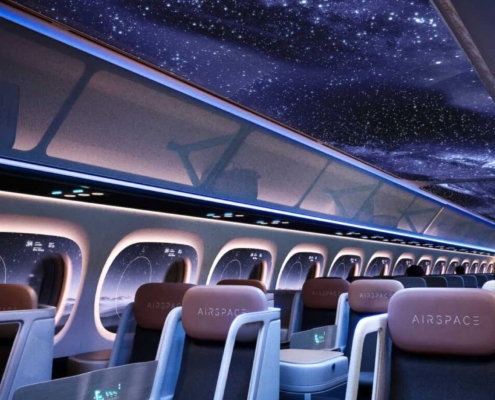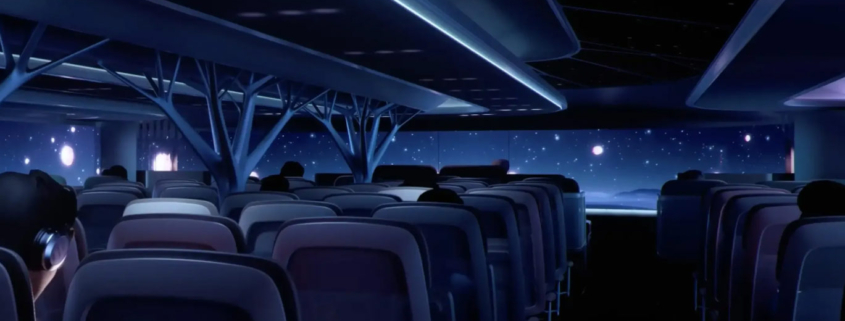Airbus has excellent news for the future of sustainable travel following the presentation of Airspace Cabin Vision 2035+, focusing on improving the user experience and caring for the environment.
This time, Airbus introduced the design and production of new elements for aircraft cabin construction. According to Ingo Wuggetzer, Vice President of Cabin Marketing, and Stan Shparberg, Senior Vice President of Commercial and International Marketing at Airbus, this element is crucial as it represents between 10% and 20% of an aircraft’s environmental impact.

Image: Business Insider
Taking this into account, Airbus has decided to focus on optimizing the cabin construction and design process to meet the needs of each aircraft. This includes considering weight, energy used in production, resources utilized, and waste generated in order to be more environmentally friendly.
Airbus aims to reduce carbon emissions by 2030 through these new measures and projects carried out in collaboration with airlines such as Iberia and technology companies.
Nature-inspired design
What is more nature-friendly than nature itself? One of the ways Airbus plans to optimize cabin design is by drawing inspiration from bones, leaves, and even insect wings to create a lightweight and nature-friendly element.
Enhancing the user experience

Image: Airbus
In addition to design, Airbus prioritizes the passenger experience by optimizing in-flight meals. How? By pre-ordering meals before the flight, which would reduce cabin weight and waste by 15%.
Taking this into account, the team also proposes the placement of food stations prior to boarding. This reduces the weight of food carts inside the aircraft. Remember that optimizing the aircraft’s weight enables smoother flights, reducing the amount of time and fuel required to complete the route.
The future of sustainable flights is getting closer. Airbus is still exploring three designs to achieve this goal: a short-haul turboprop, a medium-range jet, and an integrated blended-wing concept for long-haul flights. These projects are still in development, and there’s no final decision made yet, so we will have to wait a couple more years to see how they bring their ecological vision to life.












Leave a Reply
Want to join the discussion?Feel free to contribute!